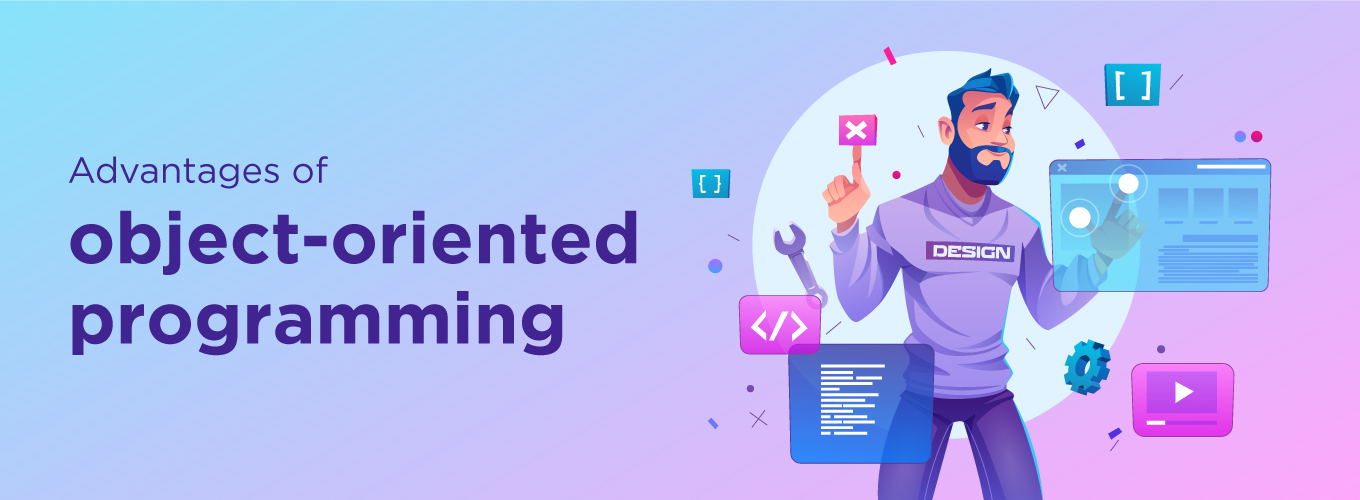In today’s tech-driven world, Object-Oriented Programming (OOP) is a core skill required for many programming and data science roles. OOP not only enhances the software’s quality but also helps reduce long-term maintenance costs, making it a valuable asset for developers. Whether you’re aiming to become a software developer or a data scientist, mastering OOP can significantly boost your career prospects. But what exactly is Object-Oriented Programming, and what are its advantages? Let’s explore this in detail.
What is an OOP and its Purposes?
Object-Oriented Programming (OOP) is a programming paradigm centered around the use of objects and classes. In OOP, reusable code blocks, called classes, serve as blueprints for creating objects. This approach focuses on organizing software design around data (objects) rather than functions or logic. Objects represent data fields with specific attributes and behaviors, making them the core of OOP.

OOP offers significant advantages to developers, including enhanced code reusability and readability, which is why it is widely preferred over other programming approaches. Popular programming languages like Java, Python, and C++ are based on OOP principles. This paradigm is particularly essential for developing software for mobile and web applications.
In essence, OOP streamlines software development by improving code clarity, modularity, and efficiency, making it a go-to choice for modern programming needs.
Key Advantages of Object-Oriented Programming (OOP)
Here are the main benefits of using Object-Oriented Programming (OOP) in real-world applications.
1. Simplified Troubleshooting
OOP makes debugging straightforward by allowing users to pinpoint errors quickly. Thanks to encapsulation, bugs are isolated within specific sections of the code, making it unnecessary to review unrelated parts. For instance, if a mobile phone screen goes blank due to a motherboard issue, OOP helps identify the fault precisely without reviewing the entire codebase. This targeted approach simplifies troubleshooting significantly.
2. Reusable Code
OOP promotes code reusability through inheritance. Instead of rewriting attributes for similar objects, developers can create child classes that inherit features from parent classes. For example, a cap object can have variations like a black cap or a red cap. These objects share common attributes, eliminating the need for repetitive coding. This approach saves time and effort while ensuring consistency.

3. Boosted Productivity
Reusable code reduces the length and complexity of programming, saving time and enhancing productivity. OOP also provides extensive libraries, enabling developers to access pre-built functionalities. These libraries reduce the need for manual coding, minimize errors, and improve overall efficiency, making development faster and more streamlined.
4. Reduced Data Redundancy
OOP minimizes data duplication by enabling functionalities to be inherited across multiple classes. If a feature is needed in various classes, it can be inherited from a single-parent class rather than being recreated repeatedly. This approach not only saves time but also prevents unnecessary repetition of tasks.
5. Flexible and Extensible Code
Polymorphism, a core OOP concept, offers flexibility by allowing code to take multiple forms. Just as an individual adapt their behavior based on the environment (e.g., an employee in the office versus a passenger on a flight), OOP enables objects to adapt and function differently based on context. This flexibility simplifies development and makes code extensible and adaptable to new requirements.

6. Effective Problem-Solving
OOP facilitates problem-solving by breaking complex issues into smaller, manageable components. Problems are divided into objects, each representing a part of the solution. Once resolved, these objects can be reused for other challenges. This modular approach improves clarity, efficiency, and scalability in software development.
7. Enhanced Security
Abstraction in OOP ensures that only the necessary amount of data is visible to users, keeping sensitive information hidden. Java, for example, uses abstraction to avoid repetitive code, while encapsulation restricts data access between different classes. Centralized coding in OOP enhances maintainability and strengthens security by safeguarding critical data.
8. Polymorphism for flexibility
Polymorphism enables objects from different classes to be handled as instances of a common superclass. By leveraging dynamic and late binding, the system determines the appropriate method at runtime based on the object’s type. This capability keeps the code adaptable and extensible, allowing it to evolve effortlessly with changing requirements.

9. Improved design and risk management
OOP promotes a meticulous design approach, encouraging developers to dedicate time to planning and minimizing risks. This results in more polished, error-resistant designs. Furthermore, as programs expand in complexity, OOP simplifies management by breaking non-OOP components into manageable sections. This focus on design ensures long-term scalability and effectiveness.
Object-oriented programming continues to be a preferred choice for developers, offering significant advantages that enhance code quality, flexibility, and security.
Are There Any Disadvantages of Object-Oriented Programming?
Yes. There are some disadvantages of using OOP in real-time use, some of them are mentioned below:
- Larger Program Size: Programs written using OOP tend to be bigger than those using procedural programming, which can lead to slower execution because they take more time to run.
- Not for Every Problem: OOP is not always the best solution. It works best for specific tasks and isn’t suitable for all problems.
- Requires Strong Skills: Using OOP effectively needs good design and programming skills, along with careful planning, as it can be tricky to use.
- Takes Time to Learn: OOP can be hard to get used to, and the way you think about it might not be easy for everyone.
- Object-Centric Thinking: OOP treats everything as an object, so developers need to think in terms of objects before applying this method.
Bottom Line
In conclusion, Object-Oriented Programming (OOP) offers numerous advantages, making it a cornerstone of modern software development. By enabling the creation of modular and reusable code, it eliminates repetitive tasks, saving time and boosting productivity. OOP’s structured approach to breaking down complex problems ensures efficient problem-solving while supporting seamless scalability from small to large systems.
Furthermore, OOP reduces development costs by streamlining processes and allows for managing multiple object instances without conflicts. Its effectiveness in building robust and scalable solutions makes it a must-learn skill for anyone aspiring to succeed in the ever-evolving software industry.


